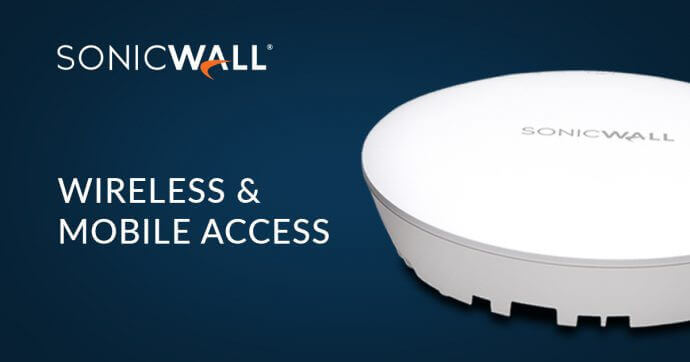Over the past few months, Verizon has launched a series of television ads in which the main character utters the line, “Right plan, wrong network.” The actor saying the line is talking to another character who is clearly having an unhappy experience with his/her cellular connection. If you own a mobile phone, it’s likely you’ve gone through something similar at one point. While the focus is on cellular in this case, the same can be said for Wi-Fi. It’s all about the user experience. Slow wireless performance is a big turn-off. If you’re providing wireless connectivity to employees, customers, students or guests, odds are you’ve heard complaints about the performance of your wireless network at some point. Of course, there are a number of factors that impact the quality of the wireless connection, such as physical objects, proximity to an access point and, if you’re outdoors, weather. None of this matters to Wi-Fi users, however. They just expect to have lightning-fast connectivity.
The Wave 2 Wireless Standard Is Here
Something else that affects performance is the technology behind the wireless signal. If you’re like me and still have an iPhone 5 that only supports the 802.11n wireless standard, you’re not expecting much. However, if you have a more modern phone you can take advantage of the faster 802.11ac standard, which has been around for the past five or so years. This assumes the access point (AP) you’re connecting to also supports that standard. Times are changing once again and the new standard is 802.11ac Wave 2, which promises multi-gigabit wireless performance. In fact, we’re right in the middle of the transition to Wave 2 technology, which means more client devices (e.g., phones, laptops, tablets, etc.) that support the new standard are coming to market along with Wave 2 wireless access points. To take advantage of the faster speeds, both the client and access point must support Wave 2.
Introducing SonicWave Wireless Access Points
Given the seemingly universal use of wireless in retail stores, schools, doctors’ offices and other locations, and the need for high-speed connectivity, SonicWall is extending its portfolio of wireless products with the introduction of a series of 802.11ac Wave 2 wireless access points. The SonicWave series features two indoor access points, the 432e and 432i, and one outdoor access point, the 432o. All three models are built on the idea of delivering an exceptionally fast, secure and reliable wireless experience. SonicWave access points support the 802.11ac wireless standard, so they’re able to take advantage of performance and reliability features such as Multi-User MIMO (MU-MIMO), which enables simultaneous transmission from the access point to multiple wireless clients instead of just one. A built-in 2.5 GbE port eliminates the need for multiple 1 GbE ports to facilitate multi-gigabit throughput. For enhanced reliability, beamforming focuses the wireless signal on an individual client instead of spreading the data transmission equally in all directions. 
Wireless Security, Speed
From an organizational standpoint, providing high-speed wireless is essential. It enables the use of bandwidth-intensive apps and faster sharing of data. Securing that data as it travels across the wireless network is equally important. SonicWall’s solution to the need for wireless security and speed is something we call Wireless Network Security, which combines SonicWave access points with our next-generation firewalls, such as the NSA series. All inbound and outbound Wi-Fi traffic is scanned by the SonicWall firewall’s high-speed deep packet inspection (DPI) engine, including TLS/SSL encrypted connections, so threats such as ransomware and intrusions are removed. Unknown files are analyzed by our Capture Advanced Threat Protection service to eliminate zero-day threats. Other security and control capabilities, such as content filtering, application control and intelligence, can be run on the wireless network to provide added layers of protection. The solution also integrates additional security-related features, including wireless intrusion detection and prevention, virtual access points and wireless guest services.  How else can SonicWall help you provide a fast, reliable and secure wireless experience?
How else can SonicWall help you provide a fast, reliable and secure wireless experience?
- Dedicated third security radio – Continually scan the wireless spectrum for rogue access points without impacting performance using the SonicWave access point’s third radio, something very few Wave 2 access points on the market provide.
- MiFi Extender – Attach a 3G/4G/LTE modem to the SonicWave access point for use as either the primary wide area network (WAN) or as a secondary failover WAN link for business continuity.
- Bluetooth Low Energy (aka Bluetooth Smart) radio – Use industrial, scientific and medical (ISM) applications for healthcare, fitness, retail beacons, security and home entertainment over a low-energy link.
- AirTime Fairness – Distribute air time equally among connected clients, ensuring faster clients get more data in their time while slower clients receive less.
- Band steering – Steer dual-band clients to connect automatically to the less-crowded 5 GHz frequency band, leaving the more-crowded 2.4 GHz frequency for legacy clients.
Wave 2 wireless technology is here and with it comes the promise of a faster and better user experience. To learn more about how the SonicWall SonicWave series can help you provide that experience, explore the new SonicWave series on our website.

